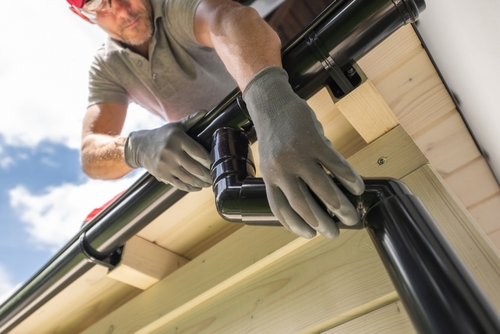Key Takeaways:
- Regular plumbing inspections prevent costly repairs – Early detection of leaks, corrosion, or blockages can save you from expensive emergencies and water damage.
- Inspect both interior and exterior systems – Check visible pipes, under-sink areas, fixtures, water heaters, outdoor faucets, and drainage systems for signs of wear or damage.
- Follow a maintenance schedule – Perform monthly visual checks, quarterly detailed inspections, and annual professional assessments to keep your plumbing in top shape.
- Watch for warning signs – Musty odors, high water bills, mold growth, discolored water, or unusual pipe noises signal potential plumbing issues.
- Call a professional for complex problems – Older homes, recurring leaks, water pressure issues, or large properties often require expert evaluation and solutions.
Plumbing is the backbone of your home’s functionality, yet it often goes unnoticed—until something major goes wrong. A thorough home plumbing inspection can help you identify hidden problems early, prevent expensive emergency repairs, and protect your property value. Whether you’re a homeowner, a property manager, this step-by-step checklist will guide you in maintaining your plumbing system efficiently.
From interior pipes to exterior drainage systems, we’ll walk you through the essentials of a plumbing inspection, highlighting what to look for and when to take action.
Why Regular Plumbing Inspections are Essential
A well-maintained plumbing system ensures not only the safety of your property but also your wallet. Plumbing failures can lead to expensive water damage, high utility bills from leaks, and even health risks due to mold growth or poor water quality. Regular inspections can:
- Detect issues before they become costly disasters.
- Maintain water efficiency and reduce waste.
- Safeguard your home’s overall structural integrity.
Ready to protect your home and save on potential repair costs? Follow this checklist to stay ahead of plumbing issues.
Interior Plumbing Inspection
1. Visible Pipes and Connections
Start your inspection indoors by examining the most accessible parts of your plumbing system.
- Check for corrosion, leaks, or water stains on visible pipes, especially around joints and fittings.
- Inspect pipe connections for tightness and potential drips, which could signal worn-out fittings.
- Look for green or white mineral buildup around connections—it’s a common sign of hard water deposits or slow leaks.
2. Under-Sink Areas
Under-sink spaces, often hidden in cabinets, should not be overlooked.
- Examine cabinet interiors for signs of moisture, water damage, or mold growth.
- Verify pipe connections and drainage functionality, ensuring there are no blockages or leaks.
- Check around supply hoses for cracking or deteriorating rubber.
3. Bathroom and Kitchen Fixtures
Faucets, toilets, and other fixtures are some of the most used plumbing components in your home.
- Test all faucets for:
- Steady water pressure.
- Smooth operation of handles.
- No persistent dripping.
- Inspect the toilet base for leaks or pooling water on the floor.
- Examine the caulking around fixtures (such as sinks and bathtubs) for cracks or separation.
4. Water Heater Assessment
Your water heater is crucial for everyday comfort, so it demands attention during inspections.
- Look for rust or corrosion on the tank exterior, which may indicate impending failure.
- Check the pressure relief valve to ensure it’s functioning and not stuck.
- Verify the age of the water heater—most last 8-12 years before replacement becomes necessary.
- Inspect the surrounding area for moisture, which could indicate a slow leak.

Exterior Plumbing Evaluation
5. Main Water Line
The main water line connects your home to the municipal supply and warrants close monitoring.
- Inspect exposed sections for leaks or damage, such as cracks or rust.
- Check your water meter for unexplained movement, which could signal hidden leaks in the system.
- Verify adequate insulation where pipes are exposed to cold temperatures.
6. Outdoor Faucets and Spigots
Outdoor water fixtures are particularly susceptible to seasonal damage.
- Test for proper sealing to ensure no drips or leaks.
- Check for freeze damage, especially after winter months.
- Ensure handles operate smoothly and look for signs of water pressure issues.
7. Drainage Systems
A thorough inspection should include your home’s drainage pathways.
- Examine gutters and downspouts to confirm that water is diverted away from the foundation.
- Check for soil erosion near drainage points, which could indicate water pooling.
- Inspect outdoor drain covers to ensure they’re free from blockages.
Advanced Diagnostic Checks
8. Water Pressure Test
Water pressure issues can quietly wreak havoc on your plumbing system.
- Measure your water pressure using a gauge attached to an outdoor faucet. The ideal range is 40-80 PSI.
- Persistent low or high pressure could point to problems with your pressure regulator or water supply.
9. Leak Detection
Early detection of leaks can save you from major headaches (and costly repairs).
- Monitor your water meter when no water is being used. If it continues to tick, there’s likely a leak.
- Consider using thermal imaging cameras to locate hidden moisture within walls or floors.
- Investigate unexplained increases in your water bill as a possible sign of a hidden leak.
Recommended Maintenance Frequency
- Monthly: Quick visual checks of exposed pipes and under-sink areas.
- Quarterly: Comprehensive interior inspections, including fixtures and connections.
- Annually: Detailed assessment conducted by a professional plumber.
- Seasonally: Special preparations for extreme temperatures, such as insulating outdoor pipes for winter.
By following this schedule, you’ll drastically reduce your chances of waking up to a plumbing emergency.
Signs You Can’t Ignore
If you notice any of the following, act immediately:
- Persistent musty or damp odors in your home.
- An unexplained spike in your water bill.
- Visible mold or mildew growth.
- Discolored or murky water.
- Unusual sounds like banging or hissing in the pipes.
Ignoring these warning signs can lead to more significant problems, so it’s better to address them sooner rather than later.
When to Bring in a Professional
While DIY inspections are a great way to catch many potential issues, not every homeowner has the time, desire, or expertise to tackle a plumbing inspection checklist on their own. Adding another task can feel overwhelming with busy schedules and long to-do lists. Additionally, some situations may require the knowledge and skills of a professional to ensure everything is thoroughly checked and resolved. Whether it’s a lack of time, unique challenges, or simply the peace of mind that comes with expert help, certain scenarios call for an expert touch:
- Older properties (30+ years), where aging infrastructure could mask hidden problems.
- Consistent water pressure problems might indicate a more complex plumbing issue.
- Large or multi-unit homes, which involve intricate plumbing networks.
- Any property with a history of recurring leaks or clogs..
If you’re inspecting your property yourself, don’t forget to:
- Use a flashlight for detailed checks.
- Maintain a written log of inspections and observations.
- Take photos to document potential problem spots.
Proactive Maintenance Protects Your Home and Wallet
Investing time in regular plumbing inspections is a proactive approach to home maintenance that pays off significantly. By systemizing your checks—whether monthly, quarterly, or annually—you can prevent costly repairs, protect your property value, and ensure your home remains safe and comfortable.
Pro Tip: Create a seasonal checklist or calendar to ensure consistency in inspections. Over time, these small efforts will yield savings and fewer headaches.
For more tips and guidance, consult a professional plumber or explore our other home maintenance resources. A little attention now goes a long way toward safeguarding your home’s future!

FAQs About Home Plumbing Inspections
1. Why are regular plumbing inspections important?
Regular inspections help detect hidden issues early, prevent costly emergency repairs, maintain water efficiency, and protect your home’s structural integrity.
2. How often should I inspect my plumbing system?
- Monthly: Quick visual checks of exposed pipes and under-sink areas.
- Quarterly: Comprehensive interior inspections, including fixtures and connections.
- Annually: Professional plumbing assessments.
- Seasonally: Prepare for extreme temperatures, like insulating outdoor pipes for winter.
3. What are common signs of plumbing problems?
Look out for musty odors, unexplained water bill spikes, visible mold, discolored water, or unusual pipe noises like banging or hissing.
4. What should I check during a plumbing inspection?
Inspect visible pipes for leaks or corrosion, test water pressure, check under-sink areas for moisture, and evaluate outdoor fixtures and drainage systems for damage or blockages.
5. When should I call a professional plumber?
Call a professional if you have recurring leaks, water pressure issues, an older home (30+ years), or a history of plumbing problems. Large or multi-unit homes may also require expert attention.
